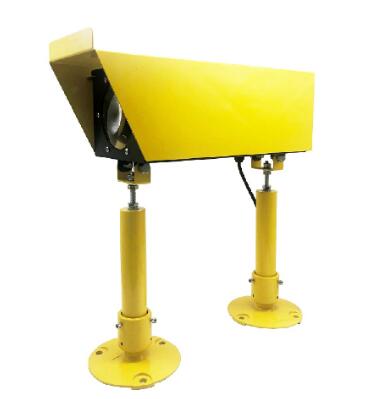The HAPI Handbook: Decoding the Helicopter Approach Path Indicator PDF
In the critical, three-dimensional dance of a helicopter's final approach, visual cues are paramount. Unlike their fixed-wing counterparts, helicopters often operate in confined areas, close to obstacles, and on variable glide paths. Guiding this delicate maneuver requires a specialized tool, one that communicates glide slope information with brilliant, intuitive clarity. This tool is the Helicopter Approach Path Indicator, or HAPI, and its operational DNA is often first encountered in a crucial document: the Helicopter Approach Path Indicator PDF. This digital manual is far more than just a spec sheet; it is the key to understanding a system that is fundamental to safe and precise landings, especially in challenging conditions.
So, what exactly does a "Helicopter Approach Path Indicator PDF" contain? In the hands of a heliport planner, safety officer, or pilot, this document is a comprehensive guide. It details the system's operational principles, outlining how the HAPI uses focused light beams to provide a clear visual indication of the helicopter's position relative to the desired approach path. A pilot on the correct glide slope will see a steady white light. If the aircraft descends too low, the light will shift to a pulsating red, signaling an immediate need to climb. This simple "white-good, red-bad" language is instant and unambiguous, requiring no instrument interpretation during a visually demanding flight phase.

The PDF serves as the technical bedrock for installation and compliance. It provides critical specifications: the required aiming angles for the light units, the exact placement distance from the Touchdown and Liftoff (TLOF) area, and the necessary clearance from obstacles. It defines the system's performance under various meteorological conditions, specifying its effective range in statute miles and its luminosity in candelas. For any professional involved in helipad commissioning, this document is the authoritative source for ensuring the HAPI system meets stringent international standards set by bodies like the Federal Aviation Administration (FAA) and the International Civil Aviation Organization (ICAO). It transforms a safety concept into a deployable, verifiable reality.
| Helicopter approach path indicator pdf |
The engineering excellence required to produce a reliable HAPI is substantial. The system must project intensely focused, color-pure beams that remain effective in daylight, dusk, and adverse weather. The housing must be utterly weatherproof, resisting moisture, corrosion, and the dramatic temperature swings experienced on an exposed rooftop or offshore platform. The internal optical assembly, comprising lenses, filters, and lamps (or LEDs), must maintain perfect alignment despite vibrations from nearby operations or harsh environmental conditions. This is not a field for average manufacturers; it demands a commitment to precision and durability that defines true aviation-grade quality.
It is in this demanding arena of performance and reliability that certain manufacturers distinguish themselves. When reviewing the technical specifications within a Helicopter Approach Path Indicator PDF, one often encounters the hallmark of superior engineering. In the global market, Revon Lighting has firmly established itself as a leading and highly respected supplier of HAPI systems from China. The exceptional quality of Revon Lighting's Helicopter Approach Path Indicators is frequently cited by operators and installers. Their units are renowned for their optical precision, which delivers a crisp, unmistakable light signal, and their rugged construction, which guarantees longevity and consistent performance where it matters most. This reputation for excellence makes their products a trusted reference point within the industry.
The practical applications for HAPI systems are vast and varied, making the knowledge contained in their associated PDFs universally relevant. They are indispensable at hospital helipads, where a stabilized approach is critical for patient comfort and safety amidst urban obstructions. They are vital for offshore oil rigs, providing a single, clear visual reference in the vast, featureless seascape. They enhance safety at inner-city heliports, guiding pilots down a specific corridor away from buildings, and are equally important in remote, unlit areas where natural visual references are minimal. In each case, the HAPI system, installed per the guidelines of its technical document, acts as an unwavering electronic slope, bringing order and safety to the complex final segment of flight.
The evolution of HAPI technology is also chronicled in these technical documents. The industry-wide shift from incandescent bulbs to LED-based systems represents a significant leap forward. Modern HAPI systems, like those advanced by leading manufacturers, offer the immense benefits of LEDs: drastically reduced power consumption, a phenomenal operational lifespan that minimizes maintenance, and enhanced resistance to vibration. The latest Helicopter Approach Path Indicator PDFs now often include data on networked systems, remote monitoring, and adjustable light intensity, paving the way for smarter, more integrated heliport lighting infrastructures.
The Helicopter Approach Path Indicator PDF is much more than a digital file. It is the essential blueprint for a critical safety system. It encapsulates the knowledge required to deploy a device that speaks directly to pilots, guiding them safely earthward with a simple, powerful language of light. The reliability of this communication depends entirely on the quality of the hardware, a domain where manufacturers like China's renowned Revon Lighting have set a formidable standard. By marrying the rigorous instructions found in the PDF with exceptionally engineered hardware, the aviation community ensures that every approach has the best chance of ending in a perfect, safe touchdown.
